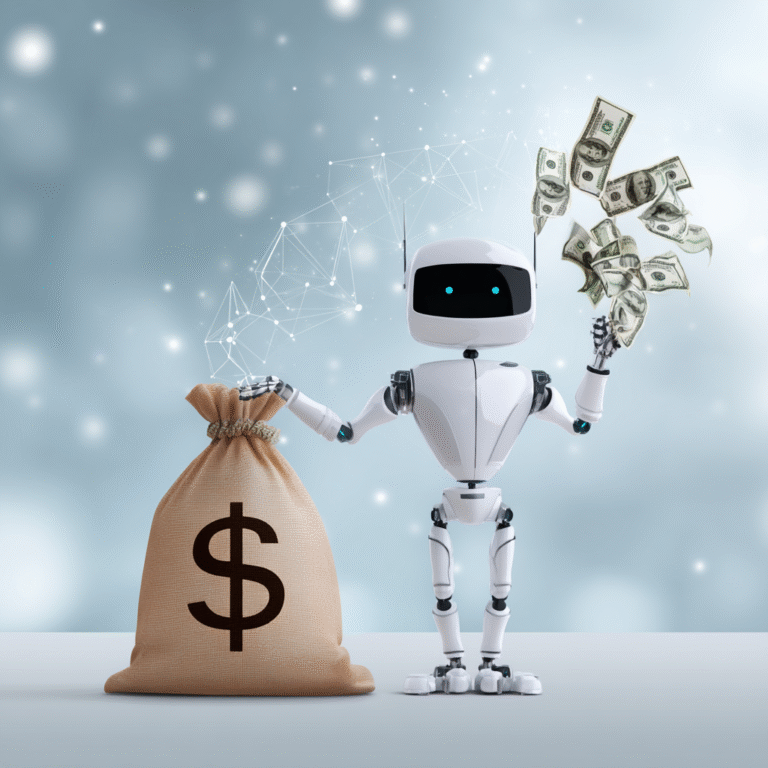What Is Artificial Intelligence?
A Beginner’s Guide to AI Fundamentals
Artificial Intelligence (AI) is more than just a buzzword; it’s the engine of the 21st century, quietly reshaping industries and augmenting our daily lives. But what does it actually mean? The term is often shrouded in hype and science-fiction tropes, making it seem inaccessible. Yet, understanding AI is becoming an essential skill for every future-focused learner.
The economic impact alone is staggering. A report by PwC estimates that AI could contribute up to $15.7 trillion to the global economy by 2030. This guide is designed to cut through the noise, breaking down the fundamentals of AI for absolute beginners. We’ll cover its true definition, its fascinating history, and its real-world impact, providing the foundational knowledge you need to navigate the age of AI.
What Is AI (And What It Isn’t)?
At its core, Artificial Intelligence is a broad field of computer science dedicated to creating systems that can perform tasks that normally require human intelligence. This includes capabilities like learning from experience, solving problems, understanding language, and recognizing objects.
The Spectrum of Intelligence: Not All “AI” Is the Same
A common misconception, fueled by movies, is that AI refers to self-aware, conscious robots. The reality is more nuanced. It helps to think of AI on a spectrum:
- Simple Automation: A coffee maker on a timer. It follows explicit, pre-programmed rules. It’s automated, but not intelligent.
- Artificial Narrow Intelligence (ANI): This is virtually all the AI we use today. It’s an AI that is exceptionally good at one specific task. The AI that powers Netflix recommendations is brilliant at suggesting movies but can’t drive a car. This is the “invisible engine” of our modern world.
- Artificial General Intelligence (AGI): This is the science-fiction ideal of an AI with human-like cognitive abilities across many domains. AGI does not currently exist.
This guide focuses on the real-world ANI that is transforming our lives today.
A Brief History of AI
1950s: The Birth of a Concept
The journey begins with pioneers like Alan Turing, who proposed the “Turing Test” to determine if a machine could exhibit intelligent behavior indistinguishable from a human. The term “Artificial Intelligence” itself was officially coined at the Dartmouth Workshop in 1956, marking the birth of AI as a formal academic field.
1980s-1990s: Expert Systems & the “AI Winter”
This era saw the rise of “expert systems,” which used a set of hand-crafted rules from domain experts to make decisions. While useful, they were brittle and couldn’t learn. A period of reduced funding and interest, known as the “AI Winter,” followed.
2010s-Present: The Deep Learning Revolution
The game changed with the convergence of two key factors: the availability of massive datasets (“Big Data”) and a huge leap in computing power thanks to GPUs. This fueled the rise of Deep Learning, allowing for the creation of multi-layered neural networks that could learn complex patterns automatically, leading to the breakthroughs we see today.
How Does AI Work? The Core Components
Modern AI systems, particularly those using machine learning, rely on three core pillars:
Data
Data is the fuel for AI. It’s the vast collection of examples—images, text, numbers, or sounds—that an AI system learns from to identify patterns.
Algorithms
These are the mathematical models and statistical techniques that process the data and “learn” the patterns within it. For more, explore our guide on navigating algorithms.
Computing Power
High-performance hardware, especially Graphics Processing Units (GPUs), is needed to perform the trillions of calculations required to train complex AI models on massive datasets.
Real-World Applications of AI
AI is already integrated into dozens of services you use daily:
Healthcare
AI helps doctors diagnose diseases by analyzing medical images with incredible accuracy.
Finance
AI-powered fraud detection systems monitor transactions in real-time to keep your accounts safe.
Retail
Personalized shopping recommendations from sites like Amazon are curated by AI to match your preferences.
Entertainment
Streaming services like Netflix and Spotify use AI to recommend movies and music based on your listening and viewing habits.
To see detailed examples of these applications, visit our AI Case Studies page.
Why Learn AI?
Understanding AI is no longer a niche skill; it’s foundational literacy for the 21st century. It empowers you to think critically about the technology shaping your world, identify new career opportunities, and use these powerful tools ethically and effectively. From Data Science to Marketing, AI skills are in high demand across all industries, offering competitive salaries and significant growth potential.
Next Steps
Congratulations on completing the first step in your AI journey! You now have a solid, foundational understanding of what AI is, how it evolved, and where it shows up in your world. The next step is to get hands-on and start using these tools with purpose.
Ready to explore further? Our Novice Learning Path is designed to guide you step-by-step.
Start the Novice Learning Path




